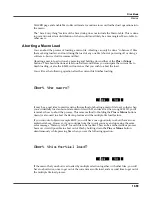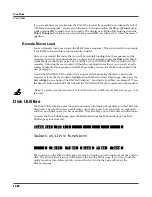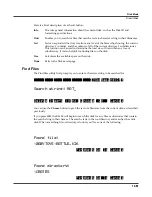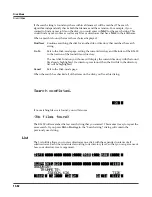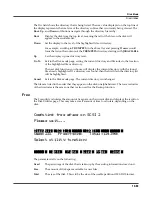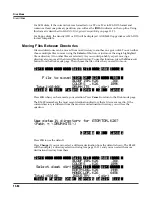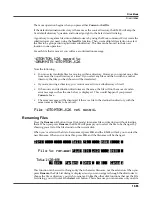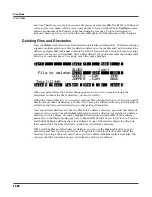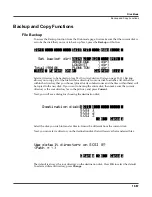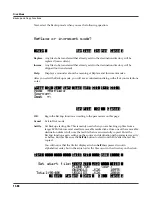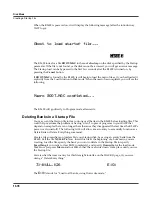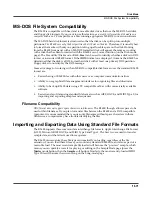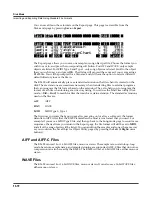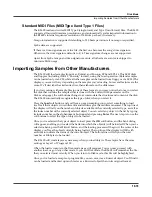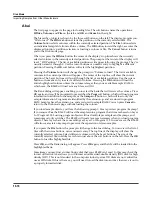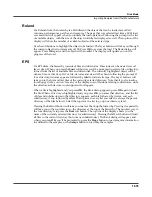
Disk Mode
Importing Samples from Other Manufacturers
13-73
Standard MIDI Files (MIDI Type 0 and Type 1 Files)
The K2600 reads and writes MIDI Type 0 (single-track) and Type 1 (multi-track) Þles. The K2600
supports all musical timestamp resolutions, and automatically scales imported information to
the K2600Õs internal sequencer resolution of 768 ticks per beat, if necessary.
Tempo information is supported, defaulting to 120 beats per minute if no tempo is speciÞed.
SysEx data are supported.
If there is a time-signature event in a Þle, the Þrst one becomes the songÕs time signature.
Otherwise, the time signature defaults to 4/4. Time signature changes are not supported.
Apart from SysEx, tempo and time-signature events, all other meta events are skipped to
minimize RAM usage.
Importing Samples from Other Manufacturers
The K2600 will load samples from Akai, Roland, and Ensoniq EPS and EPS-16 Plus SCSI disks
and ßoppies (including ASR-10 ÒEnsoniqÓ format), using the Load operation. (Roland samples
can be loaded only via SCSI, while all other samples can be loaded from ßoppy or via SCSI.) The
displays you see will vary depending on the samples youÕre loading, but several features are the
same. WeÕll describe the similarities Þrst, then elaborate on the differences.
If youÕre working with sample Þles in one of these formats, you may notice that once you select
the disk that contains the samples (this is done with the Current Disk parameter on the
Disk-mode page), the soft buttons change to accommodate the structure and content of the disk.
The K2600 automatically recognizes the type of disk when you select it.
Press the
Load
soft button, and youÕll see a page prompting you to select something to load
(weÕll call them objects, since different manufacturers give them different names). The top line of
the display will tell you the number of objects available of the currently selected type, as well as
the index number of the currently selected object. You can select any object in the list by typing
its index number on the alphanumeric buttonpad and pressing
Enter
. The next step is to use the
soft buttons to select the type of object to be loaded.
Once youÕve selected the type of object to load, press the
OK
soft button, and the bank dialog
will appear, enabling you to select the bank into which the object(s) will be loaded. When youÕve
selected a bank, press the
OK
soft button, and the loading process will begin. At the center of the
display youÕll see the object currently being loaded. The top line of the display will Þll with
asterisks to indicate the status of the current object. The bottom line will tell you the total
number of kilobytes to be loaded.
The K2600 will create layers as necessary when you load objects. These layers have the same
settings as Layer 1 of Program 199.
When the load is complete, the Disk-mode page will reappear. You can now proceed with
another load, or go to any other mode. If you exit Disk mode, the K2600 will remember the Þle
that you selected most recently. When you return to Disk mode, this Þle will be highlighted.
Once youÕve loaded a sample or program Þle, you can save it as a Kurzweil object. YouÕll Þnd it
can be loaded and backed up much faster as a Kurzweil object than in its original format.
Summary of Contents for K2600 BEST OF VAST - REV A
Page 76: ......

